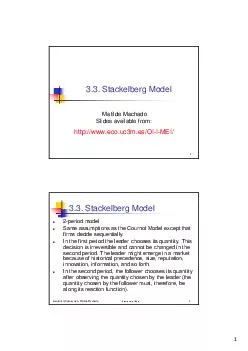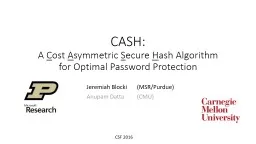PDF-Stackelberg Model Matilde Machado Slides available from httpwww
Author : kittie-lecroy | Published Date : 2014-12-21
3 Stackelberg Model Matilde Machado Slides available from httpwwwecouc3mesOIIMEI 33 Stackelberg Model 2period model Same assumptions as the Cournot Model except
Presentation Embed Code
Download Presentation
Download Presentation The PPT/PDF document "Stackelberg Model Matilde Machado Slides..." is the property of its rightful owner. Permission is granted to download and print the materials on this website for personal, non-commercial use only, and to display it on your personal computer provided you do not modify the materials and that you retain all copyright notices contained in the materials. By downloading content from our website, you accept the terms of this agreement.
Stackelberg Model Matilde Machado Slides available from httpwww: Transcript
Download Rules Of Document
"Stackelberg Model Matilde Machado Slides available from httpwww"The content belongs to its owner. You may download and print it for personal use, without modification, and keep all copyright notices. By downloading, you agree to these terms.
Related Documents














